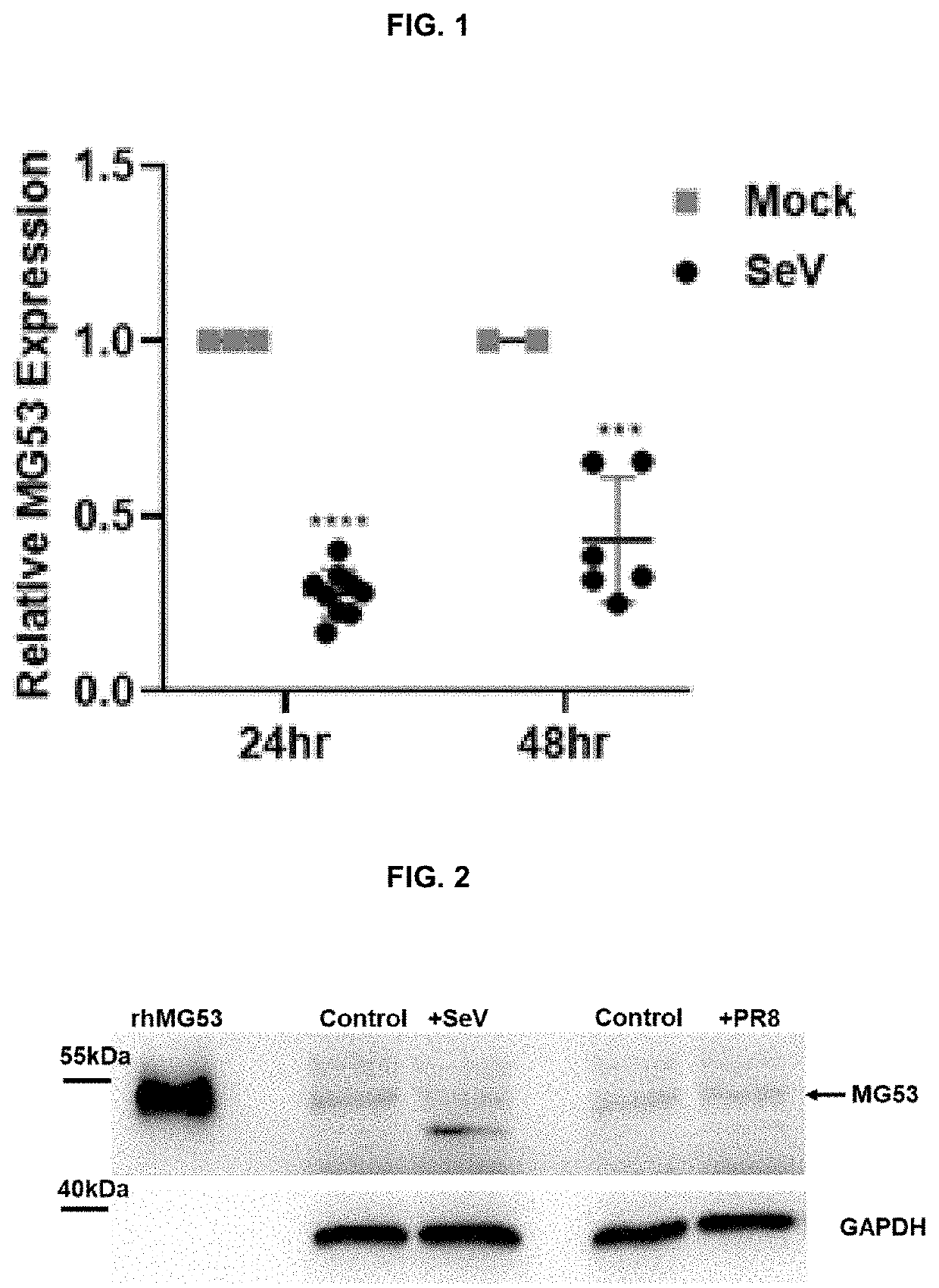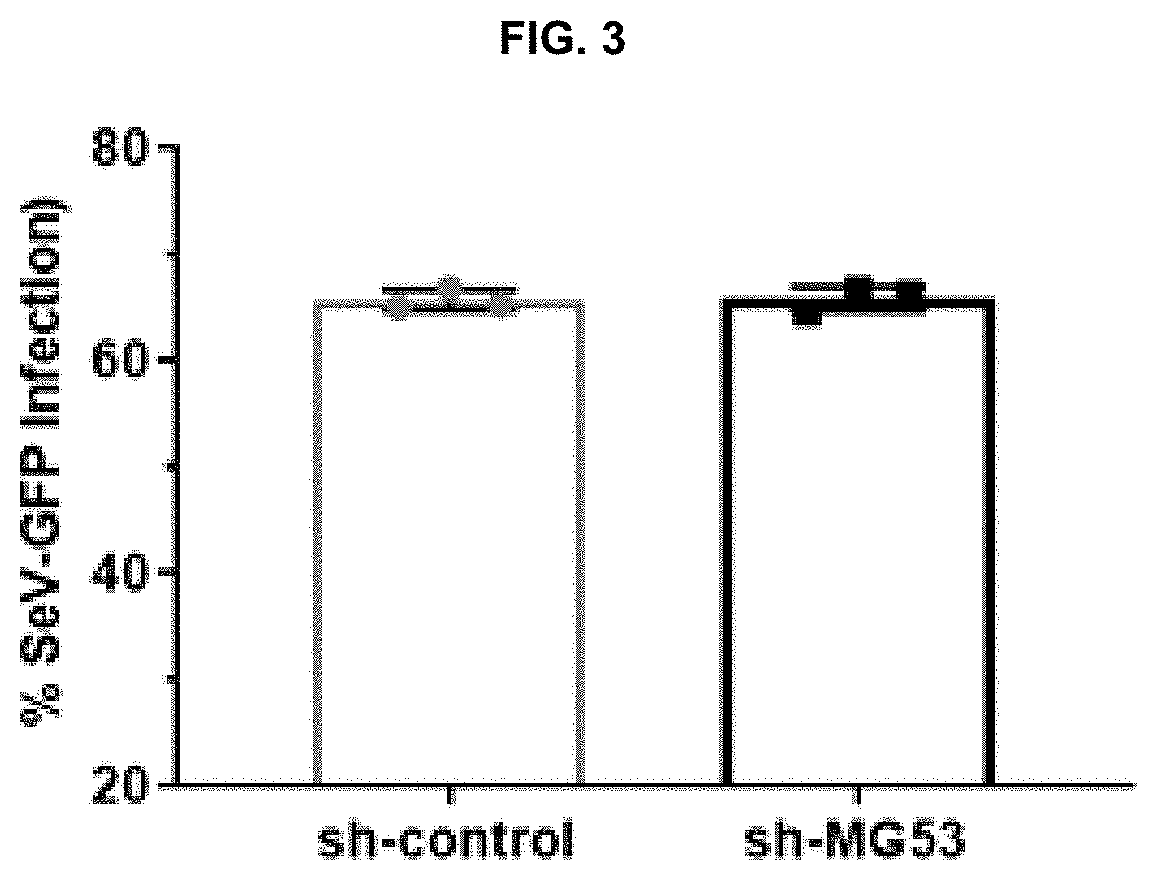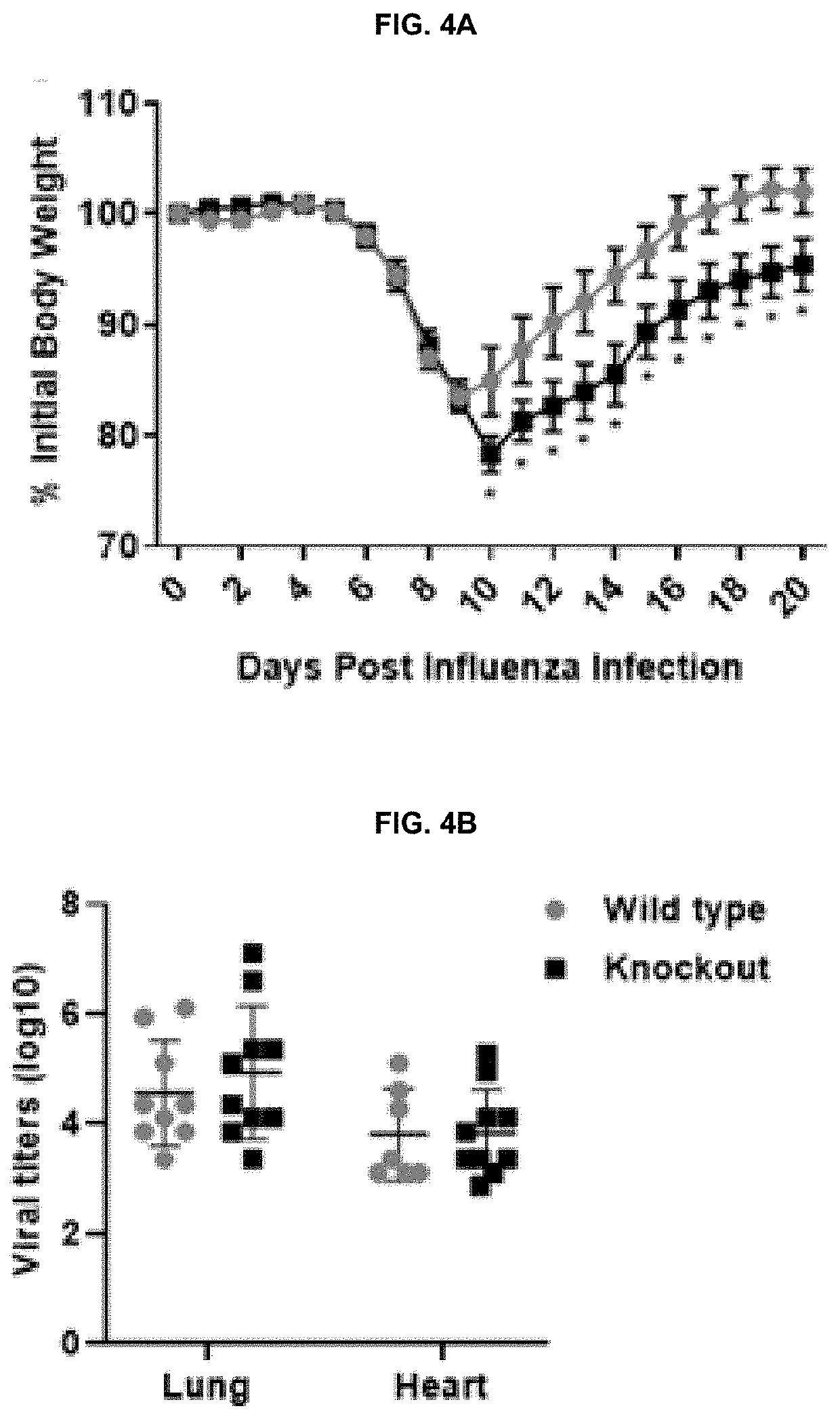Prevention and Treatment of Viral Infection and Viral Infection-Induced Organ Failure
a technology of organ failure and viral infection, applied in the field of compositions, can solve the problems of organ failure, multiple organ failure, known cause of mortality, etc., and achieve the effects of reducing the mortality rate, and mitigating the fibrosis of one or more organs
- Summary
- Abstract
- Description
- Claims
- Application Information
AI Technical Summary
Benefits of technology
Problems solved by technology
Method used
Image
Examples
example 1
In Vitro Assay in THP1 Cells: SeV
[0136]Sendai virus (SeV) expressing GFP, SeV strain Cantell, PR8 were propagated in embryonated chicken eggs and titered on LLCMK2 cells for SeV and MDCK cells for influenza virus. SeV-GFP and SeV infections were allowed to proceed for 24 or 48 hours using multiplicity of infections (MOIs) of 2 and 5 respectively. 24 hrs post SeV-GFP infection, THP1 cells were washed in PBS and fixed using 4% paraformaldehyde. Cells were washed, resuspended in PBS, and analyzed with a FACSCanto II flow cytometer (BD Biosciences) to determine the percentage of GFP positive cells. Data was analyzed using FlowJo software.
example 2
In Vitro Assay in THP1 Cells: SeV and H1N1 Influenza
[0137]Sendai virus (SeV) expressing GFP, SeV strain Cantell, and influenza virus strain PR8 were propagated in embryonated chicken eggs and titered on LLCMK2 cells for SeV and MDCK cells for influenza virus. SeV-GFP and SeV infections were allowed to proceed for 24 or 48 hours using multiplicity of infections (MOIs) of 2 and 5 respectively. 24 hrs post SeV-GFP infection, THP1 cells were washed in PBS and fixed using 4% paraformaldehyde. Cells were washed, resuspended in PBS, and analyzed with a FACSCanto II flow cytometer (BD Biosciences) to determine the percentage of GFP positive cells. Data was analyzed using FlowJo software.
example 3
Knockdown of MG53 in THP1 Cells
[0138]Control shRNA (SEQ ID 1: 5′-GACTGACATGTCAAGCTGTAC-3′) and MG53 shRNA (SEQ ID 2: 5′-GAAGAGTGTGGCTGTGCTGGAGCATCAGC-3′) were ligated into pKLO-mcherry-puro vector. In brief, HEK293-FT cells were transfected with packaging, envelope, and target plasmids. Media was changed 18 hours after transfection, followed by collection of virus-containing media 48 hours later. Virus-containing media was centrifuged at 1200×g for 5 min and filtered with 0.45 μm filters. THP1 cells were then incubated with viral media. After 24 hrs, media was replaced, and cells were allowed 48 hrs to recover. Following recovery, cells were selected for using puromycin (1.0 μg / mL), and subsequently cultured in RPMI-1640 media supplemented with puromycin (0.5 μg / mL), to generate sh-control and sh-MG53 THP1 cells.
PUM
| Property | Measurement | Unit |
|---|---|---|
| pH | aaaaa | aaaaa |
| total volume | aaaaa | aaaaa |
| total volume | aaaaa | aaaaa |
Abstract
Description
Claims
Application Information
 Login to View More
Login to View More - R&D
- Intellectual Property
- Life Sciences
- Materials
- Tech Scout
- Unparalleled Data Quality
- Higher Quality Content
- 60% Fewer Hallucinations
Browse by: Latest US Patents, China's latest patents, Technical Efficacy Thesaurus, Application Domain, Technology Topic, Popular Technical Reports.
© 2025 PatSnap. All rights reserved.Legal|Privacy policy|Modern Slavery Act Transparency Statement|Sitemap|About US| Contact US: help@patsnap.com



